46 Books Published by The University of North Carolina Press on AALBC — Book Cover Collage
 Memoirs of Robert and Mabel Williams: African American Freedom, Armed Resistance, and International Solidarity
Memoirs of Robert and Mabel Williams: African American Freedom, Armed Resistance, and International Solidarity
by Robert F. Williams and Mabel R. WilliamsThe University of North Carolina Press (Jun 17, 2025)
Read Detailed Book Description
Born in Jim Crow-era Monroe, North Carolina, Robert F. Williams and Mabel R. Williams were the state’s most legendary African American freedom fighters. The Williamses’ leadership in Monroe was just the beginning of a lifelong pursuit of freedom and justice for Black people in the United States and for oppressed populations throughout the world. Their activism foreshadowed major developments in the civil rights and Black Power movements, including Malcolm X’s advocacy of fighting oppression “by any means necessary,” the emergence of the Black Panther Party, and Black solidarity with Third World liberation movements.
Robert documented his experiences in Monroe in his classic 1962 book, Negroes with Guns, and completed a draft of his memoir, While God Lay Sleeping, months before his death in 1996. Mabel began a memoir of her own before her death in 2014. The family selected John Bracey Jr., Akinyele K. Umoja, and Gloria Aneb House to edit and complete the manuscripts, which are presented together in this book, offering a gripping portrait of these pioneering freedom fighters that is both deeply intimate and a fierce call to action in the ongoing fight against racial injustice.
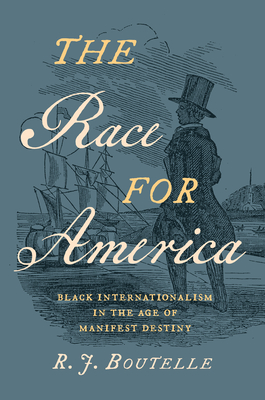 The Race for America: Black Internationalism in the Age of Manifest Destiny
The Race for America: Black Internationalism in the Age of Manifest Destiny
by R. J. BoutelleThe University of North Carolina Press (Oct 03, 2023)
Read Detailed Book Description
As Manifest Destiny took hold in the national consciousness, what did it mean for African Americans who were excluded from its ambitions for an expanding American empire that would shepherd the Western Hemisphere into a new era of civilization and prosperity? R. J. Boutelle explores how Black intellectuals like Daniel Peterson, James McCune Smith, Mary Ann Shadd, Henry Bibb, and Martin Delany engaged this cultural mythology to theorize and practice Black internationalism. He uncovers how their strategies for challenging Manifest Destiny’s white nationalist ideology and expansionist political agenda constituted a form of disidentification—a deconstructing and reassembling of this discourse that marshals Black experiences as racialized subjects to imagine novel geopolitical mythologies and projects to compete with Manifest Destiny.
Employing Black internationalist, hemispheric, and diasporic frameworks to examine the emigrationist and solidarity projects that African Americans proposed as alternatives to Manifest Destiny, Boutelle attends to sites integral to US aspirations of hemispheric dominion: Liberia, Nicaragua, Canada, and Cuba. In doing so, Boutelle offers a searing history of how internalized fantasies of American exceptionalism burdened the Black geopolitical imagination that encouraged settler-colonial and imperialist projects in the Americas and West Africa.
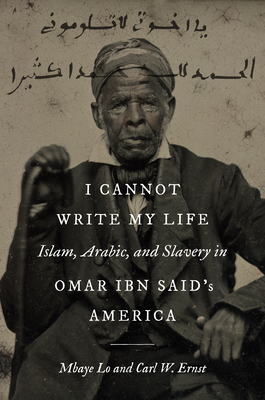 I Cannot Write My Life: Islam, Arabic, and Slavery in Omar Ibn Saidís America
I Cannot Write My Life: Islam, Arabic, and Slavery in Omar Ibn Saidís America
by Mbaye Lo and Carl W. ErnstThe University of North Carolina Press (Aug 29, 2023)
Read Detailed Book Description
Omar ibn Said (1770-1863) was a Muslim scholar from West Africa who spent more than fifty years enslaved in the North Carolina household of James Owen, brother of Governor John Owen. In 1831 Omar composed a brief autobiography, the only known narrative written in Arabic by an enslaved person in North America, and he became famous for his Arabic writings. His enslavers also provided him with an Arabic Bible and claimed Omar as a convert to Christianity, prompting wonder and speculation among amateur scholars of Islam, white slave owners, and missionaries. But these self-proclaimed experts were unable or unwilling to understand Omar’s writings, and his voice was suppressed for two centuries.
Mbaye Lo and Carl W. Ernst here weave fresh and accurate translations of Omar’s eighteen surviving writings, for the first time identifying his quotations from Islamic theological texts, correcting many distortions, and providing the fullest possible account of his life and significance. Placing Omar at the center of a broader network of the era’s literary and religious thought, Lo and Ernst restore Omar’s voice, his sophisticated engagement with Islamic and Christian theologies, his Arabic skills, and his extraordinary efforts to express himself and exert agency despite his enslavement.
 Gone Home: Race and Roots through Appalachia
Gone Home: Race and Roots through Appalachia
by Karida L. BrownThe University of North Carolina Press (Aug 01, 2021)
Read Detailed Book Description
Since the 2016 presidential election, Americans have witnessed countless stories about Appalachia: its changing political leanings, its opioid crisis, its increasing joblessness, and its declining population. These stories, however, largely ignore black Appalachian lives. Karida L. Brown’s Gone Home offers a much-needed corrective to the current whitewashing of Appalachia. In telling the stories of African Americans living and working in Appalachian coal towns, Brown offers a sweeping look at race, identity, changes in politics and policy, and black migration in the region and beyond.
Drawn from over 150 original oral history interviews with former and current residents of Harlan County, Kentucky, Brown shows that as the nation experienced enormous transformation from the pre- to the post-civil rights era, so too did black Americans. In reconstructing the life histories of black coal miners, Brown shows the mutable and shifting nature of collective identity, the struggles of labor and representation, and that Appalachia is far more diverse than you think.
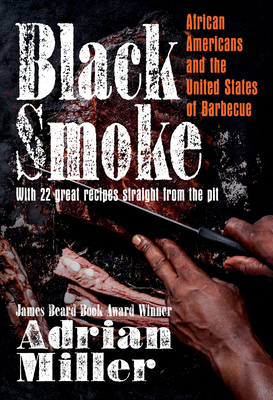 Black Smoke: African Americans and the United States of Barbecue
Black Smoke: African Americans and the United States of Barbecue
by Adrian MillerThe University of North Carolina Press (Apr 27, 2021)
Read Detailed Book Description
Across America, the pure love and popularity of barbecue cookery have gone through the roof. Prepared in one regional style or another, in the South and beyond, barbecue is one of the nation’s most distinctive culinary arts. And people aren’t just eating it; they’re also reading books and articles and watching TV shows about it. But why is it, asks Adrian Miller—admitted ’cuehead and longtime certified barbecue judge—that in today’s barbecue culture African Americans don’t get much love?
In Black Smoke, Miller chronicles how Black barbecuers, pitmasters, and restauranteurs helped develop this cornerstone of American foodways and how they are coming into their own today. It’s a smoke-filled story of Black perseverance, culinary innovation, and entrepreneurship. Though often pushed to the margins, African Americans have enriched a barbecue culture that has come to be embraced by all. Miller celebrates and restores the faces and stories of the men and women who have influenced this American cuisine. This beautifully illustrated chronicle also features 22 barbecue recipes collected just for this book.
 Half in Shadow: The Life and Legacy of Nellie Y. McKay
Half in Shadow: The Life and Legacy of Nellie Y. McKay
by Shanna Greene BenjaminThe University of North Carolina Press (Apr 12, 2021)
Read Detailed Book Description
Nellie Y. McKay (1930-2006) was a pivotal figure in contemporary American letters. The author of several books, McKay is best known for coediting the canon-making Norton Anthology of African American Literature with Henry Louis Gates Jr., which helped secure a place for the scholarly study of Black writing that had been ignored by white academia.
However, there is more to McKay’s life and legacy than her literary scholarship. After her passing, new details about McKay’s life emerged, surprising everyone who knew her. Why did McKay choose to hide so many details of her past? Shanna Greene Benjamin examines McKay’s path through the professoriate to learn about the strategies, sacrifices, and successes of contemporary Black women in the American academy.
Benjamin shows that McKay’s secrecy was a necessary tactic that a Black, working-class woman had to employ to succeed in the white-dominated space of the American English department. Using extensive archives and personal correspondence, Benjamin brings together McKay’s private life and public work to expand how we think about Black literary history and the place of Black women in American culture.
 Capitalism and Slavery, Third Edition
Capitalism and Slavery, Third Edition
by Eric WilliamsThe University of North Carolina Press (Apr 01, 2021)
Read Detailed Book Description
Slavery helped finance the Industrial Revolution in England. Plantation owners, shipbuilders, and merchants connected with the slave trade accumulated vast fortunes that established banks and heavy industry in Europe and expanded the reach of capitalism worldwide.
Eric Williams advanced these powerful ideas in Capitalism and Slavery, published in 1944. Years ahead of its time, his profound critique became the foundation for studies of imperialism and economic development.
Binding an economic view of history with strong moral argument, Williams’s study of the role of slavery in financing the Industrial Revolution refuted traditional ideas of economic and moral progress and firmly established the centrality of the African slave trade in European economic development.
He also showed that mature industrial capitalism in turn helped destroy the slave system. Establishing the exploitation of commercial capitalism and its link to racial attitudes, Williams employed a historicist vision that set the tone for future studies.
William A. Darity Jr.’s new foreword highlights Williams’s insights for a new generation of readers, and Colin Palmer’s introduction assesses the lasting impact of Williams’s groundbreaking work and analyzes the heated scholarly debates it generated when it first appeared.
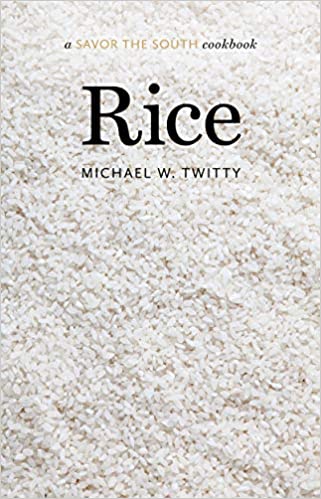 Rice: A Savor the South Cookbook
Rice: A Savor the South Cookbook
by Michael W. TwittyThe University of North Carolina Press (Mar 01, 2021)
Read Detailed Book Description
Among the staple foods most welcomed on southern tables—and on tables around the world—rice is without question the most versatile. As Michael W. Twitty observes, depending on regional tastes, rice may be enjoyed at breakfast, lunch, and dinner; as main dish, side dish, and snack; in dishes savory and sweet. Filling and delicious, rice comes in numerous botanical varieties and offers a vast range of scents, tastes, and textures depending on how it is cooked. In some dishes, it is crunchingly crispy; in others, soothingly smooth; in still others, somewhere right in between. Commingled or paired with other foods, rice is indispensable to the foodways of the South.
As Twitty’s fifty-one recipes deliciously demonstrate, rice stars in Creole, Acadian, soul food, Low Country, and Gulf Coast kitchens, as well as in the kitchens of cooks from around the world who are now at home in the South. Exploring rice’s culinary history and African diasporic identity, Twitty shows how to make the southern classics as well as international dishes’everything from Savannah Rice Waffles to Ghanaian Crab Stew. As Twitty gratefully sums up, Rice connects me to every other person, southern and global, who is nourished by rice’s traditions and customs.
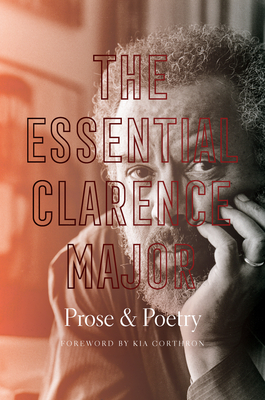 The Essential Clarence Major: Prose and Poetry
The Essential Clarence Major: Prose and Poetry
by Clarence MajorThe University of North Carolina Press (Jun 15, 2020)
Read Detailed Book Description
Clarence Major is one of America’s literary masters. He has published numerous books, from novels to poetry and short story collections. Among his many accolades, he was a finalist for the National Book Award and a Fulbright scholar and received the PEN Oakland/Reginald Lockett Lifetime Achievement Award. His work has been featured in many literary journals, newspapers, and magazines, including the New Yorker, the New York Times, and Ploughshares.
Whether you’ve known Major’s work for decades or are new to his singular style, The Essential Clarence Major offers a thrilling overview of an exceptional career, from his early groundbreaking fiction to his most recent poems. Included here are excerpts from Major’s best novels, a selection of his finest short stories and poetry, more than a dozen thought-provoking essays, a taste of his autobiography. Award-winning playwright, novelist, and screenwriter Kia Corthron introduces the collection, artfully illuminating Major’s importance as one of the foremost and original voices in contemporary American literature.
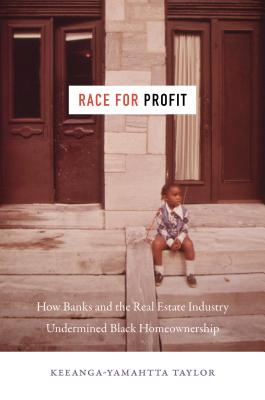 Race for Profit: How Banks and the Real Estate Industry Undermined Black Homeownership
Race for Profit: How Banks and the Real Estate Industry Undermined Black Homeownership
by Keeanga-Yamahtta TaylorThe University of North Carolina Press (Oct 21, 2019)
Read Detailed Book Description
By the late 1960s and early 1970s, reeling from a wave of urban uprisings, politicians finally worked to end the practice of redlining. Reasoning that the turbulence could be calmed by turning Black city-dwellers into homeowners, they passed the Housing and Urban Development Act of 1968, and set about establishing policies to induce mortgage lenders and the real estate industry to treat Black homebuyers equally. The disaster that ensued revealed that racist exclusion had not been eradicated, but rather transmuted into a new phenomenon of predatory inclusion.
Race for Profit uncovers how exploitative real estate practices continued well after housing discrimination was banned. The same racist structures and individuals remained intact after redlining’s end, and close relationships between regulators and the industry created incentives to ignore improprieties. Meanwhile, new policies meant to encourage low-income homeownership created new methods to exploit Black homeowners. The federal government guaranteed urban mortgages in an attempt to overcome resistance to lending to Black buyers - as if unprofitability, rather than racism, was the cause of housing segregation. Bankers, investors, and real estate agents took advantage of the perverse incentives, targeting the Black women most likely to fail to keep up their home payments and slip into foreclosure, multiplying their profits. As a result, by the end of the 1970s, the nation’s first programs to encourage Black homeownership ended with tens of thousands of foreclosures in Black communities across the country. The push to uplift Black homeownership had descended into a goldmine for realtors and mortgage lenders, and a ready-made cudgel for the champions of deregulation to wield against government intervention of any kind.
Narrating the story of a sea-change in housing policy and its dire impact on African Americans, Race for Profit reveals how the urban core was transformed into a new frontier of cynical extraction.
 Sallie Ann Robinsonís Kitchen: Food and Family Lore from the Lowcountry
Sallie Ann Robinsonís Kitchen: Food and Family Lore from the Lowcountry
by Sallie Ann RobinsonThe University of North Carolina Press (Sep 17, 2019)
Read Detailed Book Description
In her third cookbook, Sallie Ann Robinson brings readers to the dinner table in South Carolina’s Lowcountry. Born and raised on the small, remote island of Daufuskie, Robinson shares the food and foodways from her Gullah upbringing.
The Gullah of Daufuskie and the surrounding Sea Islands—descendants of enslaved West Africans and mostly isolated from the mainland—depended on hunting, fishing, and gardening. Robinson’s recipes are passed down through generations living off the land, and her lively stories capture "the island ways of doin." She enriches regional staples with her own flair in recipes like Belly-Fillin Carolina Country Boil, Island Pineapple and Coconut Chicken, Gullah Chicken Gumbo, ’Fuskie Shrimp and Blue Crab Burger, and Saut ed Cabbage with Sweet Onion.
As memories of this traditional way of life fade, Sallie Ann Robinson’s Kitchen helps preserve the food, culture, and community of Daufuskie and the Sea Islands.
 The Best of Enemies: Race and Redemption in the New South
The Best of Enemies: Race and Redemption in the New South
by Osha Gray DavidsonThe University of North Carolina Press (Feb 01, 2019)
Read Detailed Book Description
C. P. Ellis grew up in the poor white section of Durham, North Carolina, and as a young man joined the Ku Klux Klan. Ann Atwater, a single mother from the poor black part of town, quit her job as a household domestic to join the civil rights fight. During the 1960s, as the country struggled with the explosive issue of race, Ellis and Atwater met on opposite sides of the public school integration issue. Their encounters were charged with hatred and suspicion. In an amazing set of transformations, however, each of them came to see how the other had been exploited by the South’s rigid power structure, and they forged a friendship that flourished against a backdrop of unrelenting bigotry.
Now a major motion picture, The Best of Enemies offers a vivid portrait of a relationship that defied all odds.
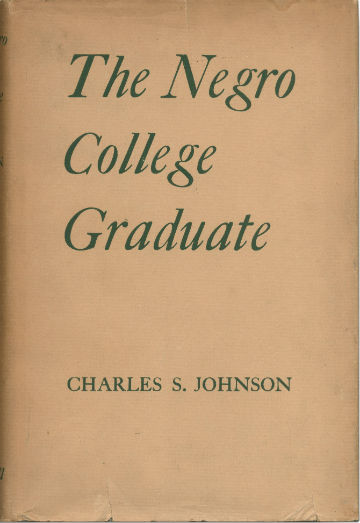 The Negro College Graduate
The Negro College Graduate
by Charles S. JohnsonThe University of North Carolina Press (Jul 01, 2018)
Read Detailed Book Description
The record of black graduates covers the period from the time the first Afro-American received an academic degree, 120 years ago, down through 1936. Particular attention is given to the number, location, occupations, and social and economic backgrounds of living graduates. On the basis of the gathered information an attempt is made to estimate future trends in higher education for blacks.
Originally published in 1938.
A UNC Press Enduring Edition — UNC Press Enduring Editions use the latest in digital technology to make available again books from our distinguished backlist that were previously out of print. These editions are published unaltered from the original, and are presented in affordable paperback formats, bringing readers both historical and cultural value.
 The Presidentís Kitchen Cabinet: The Story of the African Americans Who Have Fed Our First Families, from the Washingtons to the Obamas
The Presidentís Kitchen Cabinet: The Story of the African Americans Who Have Fed Our First Families, from the Washingtons to the Obamas
by Adrian MillerThe University of North Carolina Press (May 07, 2018)
Read Detailed Book Description
An NAACP Image Award Finalist for Outstanding Literary Work—Non Fiction
James Beard award-winning author Adrian Miller vividly tells the stories of the African Americans who worked in the presidential food service as chefs, personal cooks, butlers, stewards, and servers for every First Family since George and Martha Washington. Miller brings together the names and words of more than 150 black men and women who played remarkable roles in unforgettable events in the nation’s history. Daisy McAfee Bonner, for example, FDR’s cook at his Warm Springs retreat, described the president’s final day on earth in 1945, when he was struck down just as his lunchtime cheese souffle emerged from the oven. Sorrowfully, but with a cook’s pride, she recalled, He never ate that souffle, but it never fell until the minute he died.
A treasury of information about cooking techniques and equipment, the book includes twenty recipes for which black chefs were celebrated. From Samuel Fraunces’s onions done in the Brazilian way for George Washington to Zephyr Wright’s popovers, beloved by LBJ’s family, Miller highlights African Americans’ contributions to our shared American foodways. Surveying the labor of enslaved people during the antebellum period and the gradual opening of employment after Emancipation, Miller highlights how food-related work slowly became professionalized and the important part African Americans played in that process. His chronicle of the daily table in the White House proclaims a fascinating new American story.
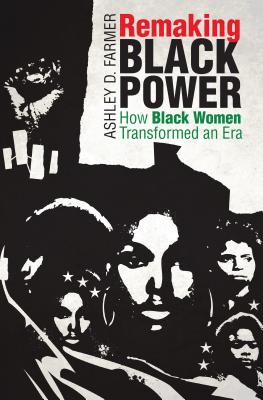 Remaking Black Power: How Black Women Transformed an Era
Remaking Black Power: How Black Women Transformed an Era
by Ashley D. FarmerThe University of North Carolina Press (Dec 18, 2017)
Read Detailed Book Description
In this comprehensive history, Ashley D. Farmer examines black women’s political, social, and cultural engagement with Black Power ideals and organizations. Complicating the assumption that sexism relegated black women to the margins of the movement, Farmer demonstrates how female activists fought for more inclusive understandings of Black Power and social justice by developing new ideas about black womanhood. This compelling book shows how the new tropes of womanhood that they created—the "Militant Black Domestic," the "Revolutionary Black Woman," and the "Third World Woman," for instance—spurred debate among activists over the importance of women and gender to Black Power organizing, causing many of the era’s organizations and leaders to critique patriarchy and support gender equality.
Making use of a vast and untapped array of black women’s artwork, political cartoons, manifestos, and political essays that they produced as members of groups such as the Black Panther Party and the Congress of African People, Farmer reveals how black women activists reimagined black womanhood, challenged sexism, and redefined the meaning of race, gender, and identity in American life.
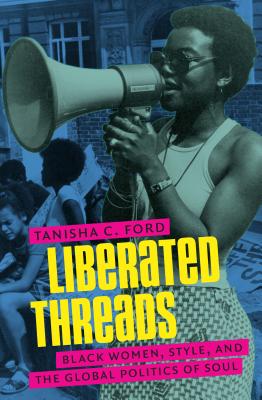 Liberated Threads: Black Women, Style, and the Global Politics of Soul
Liberated Threads: Black Women, Style, and the Global Politics of Soul
by Tanisha C. FordThe University of North Carolina Press (Aug 01, 2017)
Read Detailed Book Description
From the civil rights and Black Power era of the 1960s through anti-apartheid activism in the 1980s and beyond, black women have used their clothing, hair, and style not simply as a fashion statement but as a powerful tool of resistance. Whether using stiletto heels as weapons to protect against police attacks or incorporating African-themed designs into everyday wear, these fashion-forward women celebrated their identities and pushed for equality.
In this thought-provoking book, Tanisha C. Ford explores how and why black women in places as far-flung as New York City, Atlanta, London, and Johannesburg incorporated style and beauty culture into their activism. Focusing on the emergence of the "soul style" movement—represented in clothing, jewelry, hairstyles, and more—Liberated Threads shows that black women’s fashion choices became galvanizing symbols of gender and political liberation. Drawing from an eclectic archive, Ford offers a new way of studying how black style and Soul Power moved beyond national boundaries, sparking a global fashion phenomenon. Following celebrities, models, college students, and everyday women as they moved through fashion boutiques, beauty salons, and record stores, Ford narrates the fascinating intertwining histories of Black Freedom and fashion.
 Tales from the Haunted South: Dark Tourism and Memories of Slavery from the Civil War Era
Tales from the Haunted South: Dark Tourism and Memories of Slavery from the Civil War Era
by Tiya MilesThe University of North Carolina Press (Aug 01, 2017)
Read Detailed Book Description
In this book, Tiya Miles explores the popular yet troubling phenomenon of ghost tours, frequently promoted and experienced at plantations, urban manor homes, and cemeteries throughout the South. As a staple of the tours, guides entertain paying customers by routinely relying on stories of enslaved Black specters. But who are these ghosts? Examining popular sites and stories from these tours, Miles shows that haunted tales routinely appropriate and skew African American history to produce representations of slavery for commercial gain.
Dark tourism often highlights the most sensationalist and macabre aspects of slavery, from salacious sexual ties between white masters and Black women slaves to the physical abuse and torture of Black bodies to the supposedly exotic nature of African spiritual practices. Because the realities of slavery are largely absent from these tours, Miles reveals how they continue to feed problematic Old South narratives and erase the hard truths of the Civil War era.
In an incisive and engaging work, Miles uses these troubling cases to shine light on how we feel about the Civil War and race, and how the ghosts of the past are still with us.
 Soul Food: The Surprising Story Of An American Cuisine, One Plate At A Time
Soul Food: The Surprising Story Of An American Cuisine, One Plate At A Time
by Adrian MillerThe University of North Carolina Press (Feb 01, 2017)
Read Detailed Book Description
In this insightful and eclectic history, Adrian Miller delves into the influences, ingredients, and innovations that make up the soul food tradition. Focusing each chapter on the culinary and social history of one dish—such as fried chicken, chitlins, yams, greens, and "red drinks—Miller uncovers how it got on the soul food plate and what it means for African American culture and identity.
Miller argues that the story is more complex and surprising than commonly thought. Four centuries in the making, and fusing European, Native American, and West African cuisines, soul food—in all its fried, pork-infused, and sugary glory—is but one aspect of African American culinary heritage. Miller discusses how soul food has become incorporated into American culture and explores its connections to identity politics, bad health raps, and healthier alternatives. This refreshing look at one of America’s most celebrated, mythologized, and maligned cuisines is enriched by spirited sidebars, photographs, and 22 recipes.
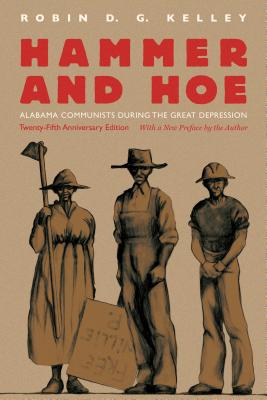 Hammer and Hoe: Alabama Communists during the Great Depression (Twenty-Fifth Anniversary)
Hammer and Hoe: Alabama Communists during the Great Depression (Twenty-Fifth Anniversary)
by Robin D. G. KelleyThe University of North Carolina Press (Aug 03, 2015)
Read Detailed Book Description
A groundbreaking contribution to the history of the "long Civil Rights movement," Hammer and Hoe tells the story of how, during the 1930s and 40s, Communists took on Alabama’s repressive, racist police state to fight for economic justice, civil and political rights, and racial equality.
The Alabama Communist Party was made up of working people without a Euro-American radical political tradition: devoutly religious and semiliterate black laborers and sharecroppers, and a handful of whites, including unemployed industrial workers, housewives, youth, and renegade liberals. In this book, Robin D. G. Kelley reveals how the experiences and identities of these people from Alabama’s farms, factories, mines, kitchens, and city streets shaped the Party’s tactics and unique political culture. The result was a remarkably resilient movement forged in a racist world that had little tolerance for radicals.
After discussing the book’s origins and impact in a new preface written for this twenty-fifth-anniversary edition, Kelley reflects on what a militantly antiracist, radical movement in the heart of Dixie might teach contemporary social movements confronting rampant inequality, police violence, mass incarceration, and neoliberalism.
 Toward an Intellectual History of Black Women
Toward an Intellectual History of Black Women
by Mia E. Bay, Farah Jasmine Griffin, Martha S. Jones, and Barbara D. SavageThe University of North Carolina Press (Apr 13, 2015)
Read Detailed Book Description
The John Hope Franklin Series in African American History and Culture
Despite recent advances in the study of black thought, black women intellectuals remain often neglected. This collection of essays by fifteen scholars of history and literature establishes black women’s places in intellectual history by engaging the work of writers, educators, activists, religious leaders, and social reformers in the United States, Africa, and the Caribbean. Dedicated to recovering the contributions of thinkers marginalized by both their race and their gender, these essays uncover the work of unconventional intellectuals, both formally educated and self-taught, and explore the broad community of ideas in which their work participated. The end result is a field-defining and innovative volume that addresses topics ranging from religion and slavery to the politicized and gendered reappraisal of the black female body in contemporary culture.
Contributors are Mia E. Bay, Judith Byfield, Alexandra Cornelius, Thadious Davis, Corinne T. Field, Arlette Frund, Kaiama L. Glover, Farah J. Griffin, Martha S. Jones, Natasha Lightfoot, Sherie Randolph, Barbara D. Savage, Jon Sensbach, Maboula Soumahoro, and Cheryl Wall.
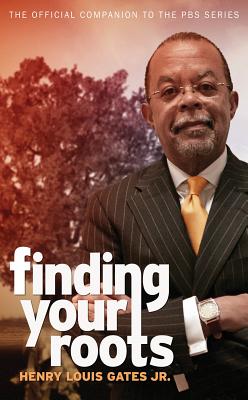 Finding Your Roots: The Official Companion To The Pbs Series
Finding Your Roots: The Official Companion To The Pbs Series
by Henry Louis Gates, Jr.The University of North Carolina Press (Sep 15, 2014)
Read Detailed Book Description
Who are we, and where do we come from? The fundamental drive to answer these questions is at the heart of Finding Your Roots, the companion book to the PBS documentary series seen by 30 million people. As Harvard scholar Henry Louis Gates Jr. shows us, the tools of cutting-edge genomics and deep genealogical research now allow us to learn more about our roots, looking further back in time than ever before. Gates’s investigations take on the personal and genealogical histories of more than twenty luminaries, including United States Congressman John Lewis, actor Robert Downey Jr., CNN medical correspondent Sanjay Gupta, President of the "Becoming American Institute" Linda Chavez, and comedian Margaret Cho. Interwoven with their moving stories of immigration, assimilation, strife, and success, Gates provides practical information for amateur genealogists just beginning archival research on their own families’ roots, and he details the advances in genetic research now available to the public. The result is an illuminating exploration of who we are, how we lost track of our roots, and how we can find them again.
 The Fire Of Freedom: Abraham Galloway And The Slavesí Civil War
The Fire Of Freedom: Abraham Galloway And The Slavesí Civil War
by David S. CecelskiThe University of North Carolina Press (Sep 29, 2012)
Read Detailed Book Description
Abraham H. Galloway (1837-1870) was a fiery young slave rebel, radical abolitionist, and Union spy who rose out of bondage to become one of the most significant and stirring black leaders in the South during the Civil War. Throughout his brief, mercurial life, Galloway fought against slavery and injustice. He risked his life behind enemy lines, recruited black soldiers for the North, and fought racism in the Union army’s ranks. He also stood at the forefront of an African American political movement that flourished in the Union-occupied parts of North Carolina, even leading a historic delegation of black southerners to the White House to meet with President Lincoln and to demand the full rights of citizenship. He later became one of the first black men elected to the North Carolina legislature.
Long hidden from history, Galloway’s story reveals a war unfamiliar to most of us. As David Cecelski writes, "Galloway’s Civil War was a slave insurgency, a war of liberation that was the culmination of generations of perseverance and faith." This riveting portrait illuminates Galloway’s life and deepens our insight into the Civil War and Reconstruction as experienced by African Americans in the South.
 The Color Of Christ: The Son Of God And The Saga Of Race In America
The Color Of Christ: The Son Of God And The Saga Of Race In America
by Edward J. Blum and Paul HarveyThe University of North Carolina Press (Sep 21, 2012)
Read Detailed Book Description
How is it that in America the image of Jesus Christ has been used both to justify the atrocities of white supremacy and to inspire the righteousness of civil rights crusades? In The Color of Christ, Edward J. Blum and Paul Harvey weave a tapestry of American dreams and visions—from witch hunts to web pages, Harlem to Hollywood, slave cabins to South Park, Mormon revelations to Indian reservations—to show how Americans remade the Son of God visually time and again into a sacred symbol of their greatest aspirations, deepest terrors, and mightiest strivings for racial power and justice.
The Color of Christ uncovers how, in a country founded by Puritans who destroyed depictions of Jesus, Americans came to believe in the whiteness of Christ. Some envisioned a white Christ who would sanctify the exploitation of Native Americans and African Americans and bless imperial expansion. Many others gazed at a messiah, not necessarily white, who was willing and able to confront white supremacy. The color of Christ still symbolizes America’s most combustible divisions, revealing the power and malleability of race and religion from colonial times to the presidency of Barack Obama.
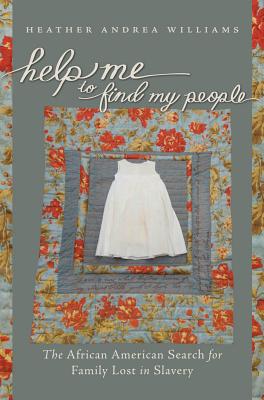 Help Me To Find My People: The African American Search For Family Lost In Slavery
Help Me To Find My People: The African American Search For Family Lost In Slavery
by Heather Andrea WilliamsThe University of North Carolina Press (Jun 01, 2012)
Read Detailed Book Description
After the Civil War, African Americans placed poignant "information wanted" advertisements in newspapers, searching for missing family members. Inspired by the power of these ads, Heather Andrea Williams uses slave narratives, letters, interviews, public records, and diaries to guide readers back to devastating moments of family separation during slavery when people were sold away from parents, siblings, spouses, and children. Williams explores the heartbreaking stories of separation and the long, usually unsuccessful journeys toward reunification. Examining the interior lives of the enslaved and freedpeople as they tried to come to terms with great loss, Williams grounds their grief, fear, anger, longing, frustration, and hope in the history of American slavery and the domestic slave trade.
Williams follows those who were separated, chronicles their searches, and documents the rare experience of reunion. She also explores the sympathy, indifference, hostility, or empathy expressed by whites about sundered black families. Williams shows how searches for family members in the post-Civil War era continue to reverberate in African American culture in the ongoing search for family history and connection across generations.
 Benjamin Elijah Mays, Schoolmaster of the Movement: A Biography
Benjamin Elijah Mays, Schoolmaster of the Movement: A Biography
by Randal Maurice JelksThe University of North Carolina Press (May 15, 2012)
Read Detailed Book Description
In this first full-length biography of Benjamin Mays (1894-1984), Randal Maurice Jelks chronicles the life of the man Martin Luther King Jr. called his "spiritual and intellectual father." Dean of the Howard University School of Religion, president of Morehouse College, and mentor to influential black leaders, Mays had a profound impact on the education of the leadership of the black church and of a generation of activists, policymakers, and educators. Jelks argues that Mays’s ability to connect the message of Christianity with the responsibility to challenge injustice prepared the black church for its pivotal role in the civil rights movement.
From Mays’s humble origins in Epworth, South Carolina, through his doctoral education, his work with institutions such as the National Urban League, the NAACP, and the national YMCA movement, and his significant career in academia, Jelks creates a rich portrait of the man, the teacher, and the scholar. Benjamin Elijah Mays, Schoolmaster of the Movement is a powerful portrayal of one man’s faith, thought, and mentorship in bringing American apartheid to an end.
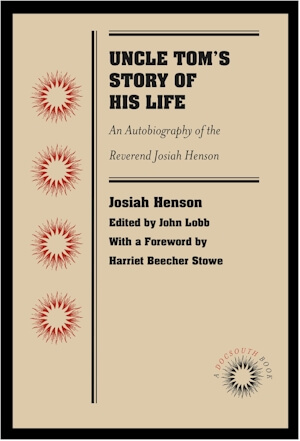 Uncle Tomís Story of His Life: An Autobiography of the Reverend Josiah Henson
Uncle Tomís Story of His Life: An Autobiography of the Reverend Josiah Henson
by Josiah HensonThe University of North Carolina Press (Sep 01, 2011)
Read Detailed Book Description
This 1876 version of Josiah Henson’s autobiography, the first of many editions issued by British editor
John Lobb, followed the original 1849 edition and a much-expanded 1858 version. The autobiography traces
Henson’s life from his birth into slavery in Maryland in 1789; his escape to Canada in 1830; his participation in the
founding of the Dawn Settlement for fugitive slaves in Ontario; and his several trips to England to raise funds for
the settlement. Henson, who in his later years toured as the model for the Uncle Tom of Harriet Beecher Stowe’s
novel, describes his meeting with Stowe in 1852 and draws parallels between the histories of other Uncle
Tom’s Cabin characters and his own acquaintances. While Stowe herself stressed that there was no
single model for her title character, she called Henson a "parallel instance" for Uncle Tom in A Key to Uncle Tom’s Cabin.
nineteenth century and translated into several other languages, Henson’s autobiography continues to reward
readers with its descriptions not only of slave life in Maryland and Kentucky, but also of the business and
educational ventures of escaped slaves in Ontario.
A Docsouth Book. This collaboration between UNC Press and the University of North Carolina at Chapel Hill
Library brings selected classic works from the digital library of Documenting the American South back into print.
DocSouth Books uses the latest digital technologies to make these works available as downloadable e-books or
print-on-demand publications. DocSouth Books are unaltered from the original publication, providing affordable
and easily accessible editions to a new generation of scholars, students, and general readers.
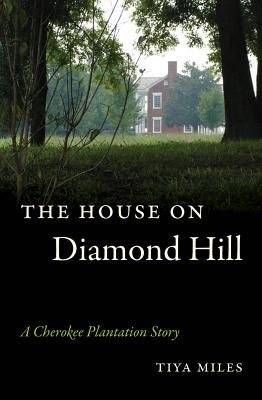 The House on Diamond Hill: A Cherokee Plantation Story
The House on Diamond Hill: A Cherokee Plantation Story
by Tiya MilesThe University of North Carolina Press (Aug 02, 2010)
Read Detailed Book Description
At the turn of the nineteenth century, James Vann, a Cherokee chief and entrepreneur, established Diamond Hill in Georgia, the most famous plantation in the southeastern Cherokee Nation. In this first full-length study to reconstruct the history of the plantation, Tiya Miles tells the story of Diamond Hill’s founding, its flourishing, its takeover by white land-lottery winners on the eve of the Cherokee Removal, its decay, and ultimately its renovation in the 1950s.
This moving multiracial history sheds light on the various cultural communities that interacted within the plantation boundaries—from elite Cherokee slaveholders to Cherokee subsistence farmers, from black slaves of various ethnic backgrounds to free blacks from the North and South, from German-speaking Moravian missionaries to white southern skilled laborers. Moreover, the book includes rich portraits of the women of these various communities. Vividly written and extensively researched, this history illuminates gender, class, and cross-racial relationships on the southern frontier.
 Pauline Elizabeth Hopkins: Black Daughter of the Revolution (Gender and American Culture)
Pauline Elizabeth Hopkins: Black Daughter of the Revolution (Gender and American Culture)
by Lois BrownThe University of North Carolina Press (Jun 30, 2008)
Read Detailed Book Description
Born into an educated free black family in Portland, Maine, Pauline Elizabeth Hopkins (1859-1930) was a pioneering playwright, journalist, novelist, feminist, and public intellectual, best known for her 1900 novel Contending Forces: A Romance of Negro Life North and South. In this critical biography, Lois Brown documents for the first time Hopkins’s early family life and her ancestral connections to eighteenth-century New England, the African slave trade, and twentieth-century race activism in the North.
Brown includes detailed descriptions of Hopkins’s earliest known performances as a singer and actress; textual analysis of her major and minor literary works; information about her most influential mentors, colleagues, and professional affiliations; and details of her battles with Booker T. Washington, which ultimately led to her professional demise as a journalist.
Richly grounded in archival sources, Brown’s work offers a definitive study that clarifies a number of inconsistencies in earlier writing about Hopkins. Brown re-creates the life of a remarkable woman in the context of her times, revealing Hopkins as the descendant of a family comprising many distinguished individuals, an active participant and supporter of the arts, a woman of stature among professional peers and clubwomen, and a gracious and outspoken crusader for African American rights.
 All Bound Up Together: The Woman Question in African American Public Culture, 1830-1900
All Bound Up Together: The Woman Question in African American Public Culture, 1830-1900
by Martha S. JonesThe University of North Carolina Press (Oct 08, 2007)
Read Detailed Book Description
The John Hope Franklin Series in African American History and Culture
The place of women’s rights in African American public culture has been an enduring question, one that has long engaged activists, commentators, and scholars. All Bound Up Together explores the roles black women played in their communities’ social movements and the consequences of elevating women into positions of visibility and leadership. Martha Jones reveals how, through the nineteenth century, the "woman question" was at the core of movements against slavery and for civil rights.
Unlike white women activists, who often created their own institutions separate from men, black women, Jones explains, often organized within already existing institutions—churches, political organizations, mutual aid societies, and schools. Covering three generations of black women activists, Jones demonstrates that their approach was not unanimous or monolithic but changed over time and took a variety of forms, from a woman’s right to control her body to her right to vote. Through a far-ranging look at politics, church, and social life, Jones demonstrates how women have helped shape the course of black public culture.
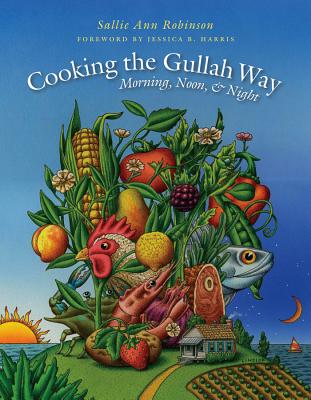 Cooking the Gullah Way, Morning, Noon, and Night
Cooking the Gullah Way, Morning, Noon, and Night
by Sallie Ann RobinsonThe University of North Carolina Press (Oct 01, 2007)
Read Detailed Book Description
Sallie Ann Robinson was born and reared on Daufuskie Island, one of the South Carolina Sea Islands well known for their Gullah culture. Although technology and development were slow in coming to Daufuskie, the island is now changing rapidly. With this book, Robinson highlights some of her favorite memories and delicious recipes from life on Daufuskie, where the islanders traditionally ate what they grew in the soil, caught in the river, and hunted in the woods.
The unique food traditions of Gullah culture contain a blend of African, European, and Native American influences. Reflecting the rhythm of a day in the kitchen, from breakfast to dinner (and anywhere in between), this cookbook collects seventy-five recipes for easy-to-prepare, robustly flavored dishes. Robinson also includes twenty-five folk remedies, demonstrating how in the Gullah culture, in the not-so-distant past, food and medicine were closely linked and the sea and the land provided what islanders needed to survive. In her spirited introduction and chapter openings, Robinson describes how cooking the Gullah way has enriched her life, from her childhood on the island to her adulthood on the nearby mainland.
Sallie Ann Robinson was born and reared on Daufuskie Island, one of the South Carolina Sea Islands well known for their West African-influenced Gullah culture. Although technology and development were slow in coming to Daufuskie, the island is now changing rapidly. With this book, Robinson highlights some of her favorite memories and delicious recipes from life on Daufuskie, where the islanders traditionally ate what they grew in the soil, caught in the river, and hunted in the woods.
Reflecting the rhythm of a day in the kitchen, this cookbook collects seventy-five recipes for easy-to-prepare, robustly flavored dishes. It also features twenty-five folk remedies, demonstrating how in the Gullah culture, in the not-so-distant past, food and medicine were closely linked and the sea and the land provided what islanders needed to survive.
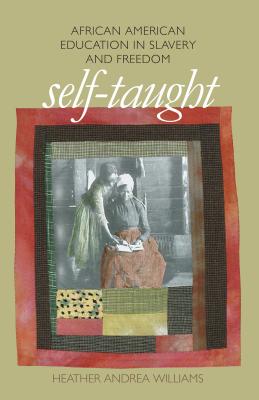 Self-Taught: African American Education in Slavery and Freedom (The John Hope Franklin Series in African American History and Culture)
Self-Taught: African American Education in Slavery and Freedom (The John Hope Franklin Series in African American History and Culture)
by Heather Andrea WilliamsThe University of North Carolina Press (Feb 26, 2007)
Read Detailed Book Description
In this previously untold story of African American self-education, Heather Andrea Williams moves across time to examine African Americans’ relationship to literacy during slavery, during the Civil War, and in the first decades of freedom. Self-Taught traces the historical antecedents to freedpeople’s intense desire to become literate and demonstrates how the visions of enslaved African Americans emerged into plans and action once slavery ended. Enslaved people, Williams contends, placed great value in the practical power of literacy, whether it was to enable them to read the Bible for themselves or to keep informed of the abolition movement and later the progress of the Civil War. Some slaves devised creative and subversive means to acquire literacy, and when slavery ended, they became the first teachers of other freedpeople. Soon overwhelmed by the demands for education, they called on northern missionaries to come to their aid. Williams argues that by teaching, building schools, supporting teachers, resisting violence, and claiming education as a civil right, African Americans transformed the face of education in the South to the great benefit of both black and white southerners.
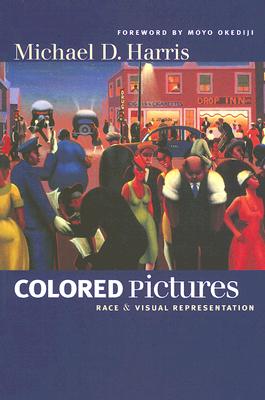 Colored Pictures: Race and Visual Representation
Colored Pictures: Race and Visual Representation
by Michael D. HarrisThe University of North Carolina Press (Feb 27, 2006)
Read Detailed Book Description
In this book, artist and art historian Michael Harris investigates the role of visual representation in the construction of black identities, both real and imagined, in the United States. He focuses particularly on how African American artists have responded to—and even used—stereotypical images in their own works.
Harris shows how, during the nineteenth and twentieth centuries, racial stereotypes became the dominant mode through which African Americans were represented. These characterizations of blacks formed a substantial part of the foundation of white identity and social power. They also, Harris argues, seeped into African Americans’ self-images and undermined their self-esteem.
Harris traces black artists’ responses to racist imagery across two centuries, from early works by Henry O. Tanner and Archibald J. Motley Jr., in which African Americans are depicted with dignity, to contemporary works by Kara Walker and Michael Ray Charles, in which derogatory images are recycled to controversial effect. The work of these and other artists—such as John Biggers, Jeff Donaldson, Betye Saar, Juan Logan, and Camille Billops—reflects a wide range of perspectives. Examined together, they offer compelling insight into the profound psychological impact of visual stereotypes on the African American community.
 The Black Arts Movement: Literary Nationalism in the 1960s and 1970s
The Black Arts Movement: Literary Nationalism in the 1960s and 1970s
by James SmethurstThe University of North Carolina Press (May 09, 2005)
Read Detailed Book Description
Emerging from a matrix of Old Left, black nationalist, and bohemian ideologies and institutions, African American artists and intellectuals in the 1960s coalesced to form the Black Arts Movement, the cultural wing of the Black Power Movement. In this comprehensive analysis, James Smethurst examines the formation of the Black Arts Movement and demonstrates how it deeply influenced the production and reception of literature and art in the United States through its negotiations of the ideological climate of the Cold War, decolonization, and the civil rights movement.
Taking a regional approach, Smethurst examines local expressions of the nascent Black Arts Movement, a movement distinctive in its geographical reach and diversity, while always keeping the frame of the larger movement in view. The Black Arts Movement, he argues, fundamentally changed American attitudes about the relationship between popular culture and "high" art and dramatically transformed the landscape of public funding for the arts.
 Worrying the Line: Black Women Writers, Lineage, and Literary Tradition (Gender and American Culture)
Worrying the Line: Black Women Writers, Lineage, and Literary Tradition (Gender and American Culture)
by Cheryl A. WallThe University of North Carolina Press (Feb 28, 2005)
Read Detailed Book Description
For blues musicians, "worrying the line" is the technique of breaking up a phrase by changing pitch, adding a shout, or repeating words in order to emphasize, clarify, or subvert a moment in a song. Cheryl A. Wall applies this term to fiction and nonfiction writing by African American women in the twentieth century, demonstrating how these writers bring about similar changes in African American and American literary traditions.
Examining the works of Lucille Clifton, Gayl Jones, Audre Lorde, Paule Marshall, Toni Morrison, Gloria Naylor, and Alice Walker, Wall highlights ways in which these authors construct family genealogies, filling in the gaps with dreams, rituals, music, or images that forge a connection to family lost through slavery. For the black woman author, Wall contends, this method of revising and extending canonical forms provides the opportunity to comment on the literary past while also calling attention to the lingering historical effects of slavery. For the reader, Wall shows, the images and words combine to create a new kind of text that extends meanings of the line, both as lineage and as literary tradition.
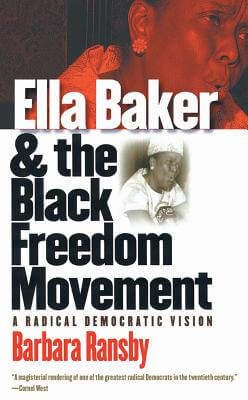 Ella Baker and the Black Freedom Movement: A Radical Democratic Vision (Gender and American Culture)
Ella Baker and the Black Freedom Movement: A Radical Democratic Vision (Gender and American Culture)
by Barbara RansbyThe University of North Carolina Press (Feb 28, 2005)
Read Detailed Book Description
One of the most important African American leaders of the twentieth century and perhaps the most influential woman in the civil rights movement, Ella Baker (1903-1986) was an activist whose remarkable career spanned fifty years and touched thousands of lives.
A gifted grassroots organizer, Baker shunned the spotlight in favor of vital behind-the-scenes work that helped power the black freedom struggle. She was a national officer and key figure in the National Association for the Advancement of Colored People, one of the founders of the Southern Christian Leadership Conference, and a prime mover in the creation of the Student Nonviolent Coordinating Committee. Baker made a place for herself in predominantly male political circles that included W. E. B. Du Bois, Thurgood Marshall, and Martin Luther King Jr., all the while maintaining relationships with a vibrant group of women, students, and activists both black and white.
In this deeply researched biography, Barbara Ransby chronicles Baker’s long and rich political career as an organizer, an intellectual, and a teacher, from her early experiences in depression-era Harlem to the civil rights movement of the 1950s and 1960s. Ransby shows Baker to be a complex figure whose radical, democratic worldview, commitment to empowering the black poor, and emphasis on group-centered, grassroots leadership set her apart from most of her political contemporaries. Beyond documenting an extraordinary life, the book paints a vivid picture of the African American fight for justice and its intersections with other progressive struggles worldwide across the twentieth century.
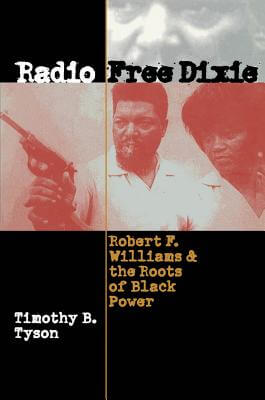 Radio Free Dixie: Robert F. Williams and the Roots of Black Power
Radio Free Dixie: Robert F. Williams and the Roots of Black Power
by Timothy B. TysonThe University of North Carolina Press (Jan 05, 2005)
Read Detailed Book Description
This book tells the remarkable story of Robert F. Williams—one of the most influential black activists of the generation that toppled Jim Crow and forever altered the arc of American history. In the late 1950s, as president of the Monroe, North Carolina, branch of the NAACP, Williams and his followers used machine guns, dynamite, and Molotov cocktails to confront Klan terrorists. Advocating "armed self-reliance" by blacks, Williams challenged not only white supremacists but also Martin Luther King Jr. and the civil rights establishment. Forced to flee during the 1960s to Cuba—where he broadcast "Radio Free Dixie," a program of black politics and music that could be heard as far away as Los Angeles and New York City—and then China, Williams remained a controversial figure for the rest of his life.
Historians have customarily portrayed the civil rights movement as a nonviolent call on America’ s conscience—and the subsequent rise of Black Power as a violent repudiation of the civil rights dream. But Radio Free Dixie reveals that both movements grew out of the same soil, confronted the same predicaments, and reflected the same quest for African American freedom. As Robert Williams’ s story demonstrates, independent black political action, black cultural pride, and armed self-reliance operated in the South in tension and in tandem with legal efforts and nonviolent protest.
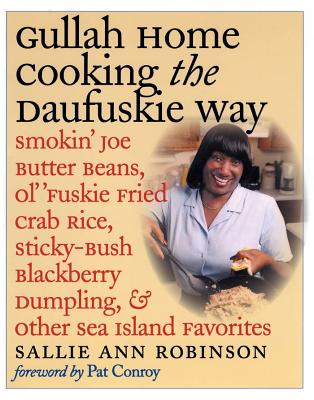 Gullah Home Cooking the Daufuskie Way: Smokiní Joe Butter Beans, Olí íFuskie Fried Crab Rice, Sticky-Bush Blackberry Dumpling, and Other Sea Island Favorites
Gullah Home Cooking the Daufuskie Way: Smokiní Joe Butter Beans, Olí íFuskie Fried Crab Rice, Sticky-Bush Blackberry Dumpling, and Other Sea Island Favorites
by Sallie Ann RobinsonThe University of North Carolina Press (Apr 07, 2003)
Read Detailed Book Description
If there’s one thing we learned coming up on Daufuskie, remembers Sallie Ann Robinson, it’s the importance of good, home-cooked food. In this enchanting book, Robinson presents the delicious, robust dishes of her native Sea Islands and offers readers a taste of the unique, West African-influenced Gullah culture still found there.
Living on a South Carolina island accessible only by boat, Daufuskie folk have traditionally relied on the bounty of fresh ingredients found on the land and in the waters that surround them. The one hundred home-style dishes presented here include salads and side dishes, seafood, meat and game, rice, quick meals, breads, and desserts. Gregory Wrenn Smith’s photographs evoke the sights and tastes of Daufuskie.
Here are my family’s recipes, writes Robinson, weaving warm memories of the people who made and loved these dishes and clear instructions for preparing them. She invites readers to share in the joys of Gullah home cooking the Daufuskie way, to make her family’s recipes their own.
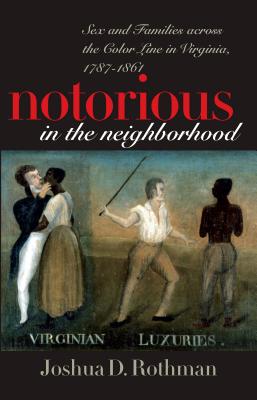 Notorious in the Neighborhood: Sex and Families Across the Color Line in Virginia, 1787-1861
Notorious in the Neighborhood: Sex and Families Across the Color Line in Virginia, 1787-1861
by Joshua D. RothmanThe University of North Carolina Press (Mar 31, 2003)
Read Detailed Book Description
Laws and cultural norms militated against interracial sex in Virginia before the Civil War, and yet it was ubiquitous in cities, towns, and plantation communities throughout the state. In Notorious in the Neighborhood, Joshua Rothman examines the full spectrum of interracial sexual relationships under slavery—from Thomas Jefferson, Sally Hemings, and the intertwined interracial families of Monticello and Charlottesville to commercial sex in Richmond, the routinized sexual exploitation of enslaved women, and adultery across the color line. He explores the complex considerations of legal and judicial authorities who handled cases involving illicit sex and describes how the customary toleration of sex across the color line both supported and undermined racism and slavery in the early national and antebellum South.
White Virginians allowed for an astonishing degree of flexibility and fluidity within a seemingly rigid system of race and interracial relations, Rothman argues, and the relationship between law and custom regarding racial intermixture was always shifting. As a consequence, even as whites never questioned their own racial supremacy, the meaning and significance of racial boundaries, racial hierarchy, and ultimately of race itself always stood on unstable ground—a reality that whites understood and about which they demonstrated increasing anxiety as the nation's sectional crisis intensified.
 Southern History Across the Color Line
Southern History Across the Color Line
by Nell Irvin PainterThe University of North Carolina Press (Apr 29, 2002)
Read Detailed Book Description
The color line, once all too solid in southern public life, still exists in the study of southern history. As distinguished historian Nell Irvin Painter notes, historians often still write about the South as though people of different races occupied entirely different spheres. In truth, although blacks and whites were expected to remain in their assigned places in the southern social hierarchy throughout the nineteenth and much of the twentieth century, their lives were thoroughly entangled.
In this powerful collection, Painter reaches across the color line to examine how race, gender, class, and individual subjectivity shaped the lives of black and white women and men in the nineteenth- and twentieth-century South. Through six essays, she explores such themes as interracial sex, white supremacy, and the physical and psychological violence of slavery, using insights gleaned from psychology and feminist social science as well as social, cultural, and intellectual history.
At once pioneering and reflective, the book illustrates both the breadth of Painter’s interests and the originality of her intellectual contributions. It will inspire and guide a new generation of historians who take her goal of transcending the color bar as their own.
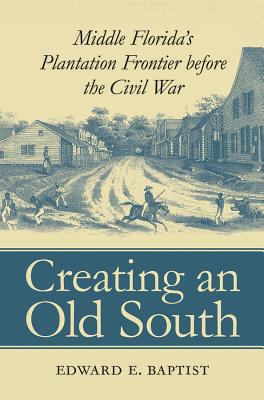 Creating an Old South: Middle Floridaís Plantation Frontier before the Civil War
Creating an Old South: Middle Floridaís Plantation Frontier before the Civil War
by Edward E. BaptistThe University of North Carolina Press (Apr 29, 2002)
Read Detailed Book Description
Set on the antebellum southern frontier, this book uses the history of two counties in Florida’s panhandle to tell the story of the migrations, disruptions, and settlements that made the plantation South.
Soon after the United States acquired Florida from Spain in 1821, migrants from older southern states began settling the land that became Jackson and Leon Counties. Slaves, torn from family and community, were forced to carve plantations from the woods of Middle Florida, while planters and less wealthy white men battled over the social, political, and economic institutions of their new society.
Conflict between white men became full-scale crisis in the 1840s, but when sectional conflict seemed to threaten slavery, the whites of Middle Florida found common ground. In politics and everyday encounters, they enshrined the ideal of white male equality—and black inequality. To mask their painful memories of crisis, the planter elite told themselves that their society had been transplanted from older states without conflict. But this myth of an "Old," changeless South only papered over the struggles that transformed slave society in the course of its expansion. In fact, that myth continues to shroud from our view the plantation frontier, the very engine of conflict that had led to the myth’s creation.
 From the Barrel of a Gun: The United States and the War against Zimbabwe, 1965-1980
From the Barrel of a Gun: The United States and the War against Zimbabwe, 1965-1980
by Gerald HorneThe University of North Carolina Press (Jun 25, 2001)
Read Detailed Book Description
In November 1965, Ian Smith’s white minority government in Southern Rhodesia (now Zimbabwe) made a unilateral declaration of independence, breaking with Great Britain. With a European population of a few hundred thousand dominating an African majority of several million, Rhodesia’s racial structure echoed the apartheid of neighboring South Africa. Smith’s declaration sparked an escalating guerrilla war that claimed thousands of lives. Across the Atlantic, President Lyndon B. Johnson nervously watched events in Rhodesia, fearing that racial conflict abroad could inflame racial discord at home. Although Washington officially voiced concerns over human rights violations, an attitude of tolerance generally marked U. S. relations with the Rhodesian government: sanctions were imposed but not strictly enforced, and hundreds, perhaps thousands, of American mercenaries joined white Rhodesia’s side in battle with little to fear from U. S. laws. Despite such tacit U. S. support, Smith’s regime fell in 1980, and the independent state of Zimbabwe was born. The first comprehensive account of American involvement in the war against Zimbabwe, this compelling work also explores how our relationship with Rhodesia helped define interracial dynamics in the United States, and vice versa.
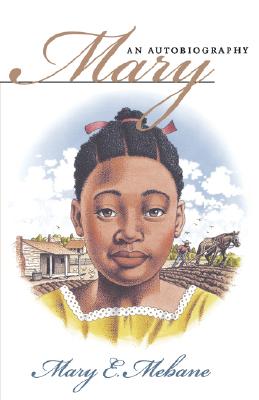 Mary: An Autobiography (Chapel Hill Books)
Mary: An Autobiography (Chapel Hill Books)
by Mary E. MebaneThe University of North Carolina Press (Mar 22, 1999)
Read Detailed Book Description
Born in rural North Carolina in 1933, into the last generation before the lines of segregation were broken, the young Mary Mebane felt herself trapped in a "world without options." But even in the face of poverty, racism, and the chilling certainty that her mother’s affection would never be won, she vowed to escape.In this powerful autobiography, first published in 1981, Mebane recalls the joys and chores of her country childhood, the pain of her alienation from her family and community, and her dawning awareness that in her gifts for language and learning lay her key to freedom. With her graduation from college comes a triumph that is both hard-won and bittersweet.
 Democracy Betrayed: The Wilmington Race Riot of 1898 and Its Legacy
Democracy Betrayed: The Wilmington Race Riot of 1898 and Its Legacy
by Timothy B. TysonThe University of North Carolina Press (Nov 10, 1998)
Read Detailed Book Description
At the close of the nineteenth century, the Democratic Party in North Carolina engineered a white supremacy revolution. Frustrated by decades of African American self-assertion and threatened by an interracial coalition advocating democratic reforms, white conservatives used violence, demagoguery, and fraud to seize political power and disenfranchise black citizens. The most notorious episode of the campaign was the Wilmington “race riot” of 1898, which claimed the lives of many black residents and rolled back decades of progress for African Americans in the state.
Published on the centennial of the Wilmington race riot, Democracy Betrayed draws together the best new scholarship on the events of 1898 and their aftermath. Contributors to this important book hope to draw public attention to the tragedy, to honor its victims, and to bring a clear and timely historical voice to the debate over its legacy.
The contributors are David S. Cecelski, William H. Chafe, Laura F. Edwards, Raymond Gavins, Glenda E. Gilmore, John Haley, Michael Honey, Stephen Kantrowitz, H. Leon Prather Sr., Timothy B. Tyson, LeeAnn Whites, and Richard Yarborough.
 The Black Bard Of North Carolina: George Moses Horton And His Poetry
The Black Bard Of North Carolina: George Moses Horton And His Poetry
by George Moses HortonThe University of North Carolina Press (Apr 28, 1997)
Read Detailed Book Description
For his humanistic religious verse, his poignant and deeply personal antislavery poems, and, above all, his lifelong enthusiasm for liberty, nature, and the art of poetry, George Moses Horton merits a place of distinction among nineteenth-century African American poets. Enslaved from birth until the close of the Civil War, the self-taught Horton was the first American slave to protest his bondage in published verse and the first black man to publish a book in the South. As a man and as a poet, his achievements were extraordinary.
In this volume, Joan Sherman collects sixty-two of Horton’s poems. Her comprehensive introduction—combining biography, history, cultural commentary, and critical insight—presents a compelling and detailed picture of this remarkable man’s life and art.
George Moses Horton (ca. 1797-1883) was born in Northampton County, North Carolina. A slave for sixty-eight years, Horton spent much of his life on a farm near Chapel Hill, and in time he fostered a deep connection with the University of North Carolina at Chapel Hill. The author of three books of poetry, Horton was inducted into the North Carolina Literary Hall of Fame in May of 1996.
Inlcudes 62 of Horton Poems from his three books of Poetry
For his humanistic religious verse, his poignant and deeply personal
antislavery poems, his folk verse, and, above all, his lifelong enthusiasm
for liberty, nature, and the art of poetry, George Moses Horton merits a
place of distinction among nineteenth-century African American poets.
Enslaved for sixty-eight years - from his birth until the close of the Civil
War - he was the first American slave to protest his bondage in published
verse, the first black man to publish a book in the South, and the only
slave to earn a significant income through the sale of his poems. As a man
and as a poet, Horton’s achievements were extraordinary. In this volume,
Joan Sherman collects sixty-two of Horton’s poems. Her comprehensive
introduction - which combines biography, history, cultural commentary, and
critical insight - presents a compelling and detailed picture of this
remarkable man’s life and art. Covering a wide range of poetical subjects in
varied verse forms, this collection is an eloquent testament to Horton’s
unique voice.
For his humanistic religious verse, his poignant and deeply personal
antislavery poems, and, above all, his lifelong enthusiasm for liberty,
nature, and the art of poetry, George Moses Horton merits a place of
distinction among nineteenth-century African American poets. Enslaved from
birth until the close of the Civil War, the self-taught Horton was the first
American slave to protest his bondage in published verse and the first black
man to publish a book in the South. As a man and as a poet, his achievements
were extraordinary.
In this volume, Joan Sherman collects sixty-two of Horton’s poems. Her
comprehensive introduction—combining biography, history, cultural
commentary, and critical insight—presents a compelling and detailed picture
of this remarkable man’s life and art.
- Acrostics
- The Art Of A Poet
- The Cheerless Condition Of Bachelorship
- The Close Of Life
- Connubial Felicity
- The Creditor To His Proud Debtor
- Death Of An Old Carriage Horse
- Division Of An Estate
- Early Affection
- Excited From Reading The Obedience Of Nature To Her Lord In Vessel Sea
- Execution Of Private Henry Anderson
- Farewell To Frances
- The Fate Of An Innocent Dog
- The Fearful Traveller In The Haunted Castle
- For The Fair Miss M. M. Mcl(ean)
- Gen. Grant — The Hero Of The War
- George Moses Horton, Myself
- The Graduate Leaving College
- Gratitude
- Heavenly Love
- The Horse Stolen From The Camp
- Imploring To Be Resigned At Death (from Poetical Works)
Let me die and not tremble at death,
But smile at the close of my day,
And then, at the flight of my breath,
Like a bird of the morning in May,
Go chanting away.
Let me die without fear of the dead,
No horrors my soul shall dismay,
And with faith’s pillow under my head,
With defiance to mortal decay,
Go chanting away.
Let me die like a son of the brave,
And martial distinction display,
Nor shrink from a thought of the grave,
No, but with a smile from the clay,
Go chanting away.
Let me die glad, regardless of pain,
No pang to this world to betray;
And the spirit cut loose from its chain,
So loath in the flesh to delay,
Go chanting away.
Let me die, and my worst foe forgive,
When death veils the last vital ray;
- The Intemperance Club
- Jefferson In A Tight Place
- Liberty
- Lincoln Is Dead
- Lines To My —
- Love
- Man, A Torch
- Meditation On A Cold, Dark And Rainy Night
- My Native Home
- New Fashions
- The Obstruction Of Genius
- On An Old Deluded Suitor
- On Hearing Of Intention .. To Purchase The Poet’s Freedom
- On Liberty And Slavery
- On Summer
- On The Evening And Morning
- On The Pleasure Of College Life
- On The Poetic Muse
- On The Truth Of The Saviour
- On Winter
- One Generation Passeth Away And Another Cometh
- The Poet’s Feeble Petition
- Praise Of Creation
- Reflections From The Flash Of A Meteor
- The Retreat From Moscow
- Rosabella — Purity Of Heart
- The Slave
- The Slave’s Complaint
- A Slave’s Reflections The Eve Before His Sale
- Slavery (1)
- Slavery (2)
- Snaps For Dinner, Snaps For Breakfast, And Snaps For Supper
- Song Of Liberty And Parental Advice
- The Southern Refugee
- The Tippler To His Bottle
- To Eliza
- To The Muse
- Troubled With The Itch, And Rubbing With Sulphur
- The Union Of Parties
- The Woodman And Money Hunter
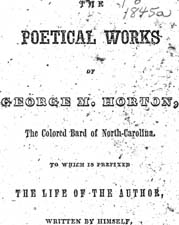 THE
POETICAL WORKS of GEORGE M. HORTON, The Colored Bard
of North-Carolina, to which is prefixed The Life Of The Author, Written by
Himself.
THE
POETICAL WORKS of GEORGE M. HORTON, The Colored Bard
of North-Carolina, to which is prefixed The Life Of The Author, Written by
Himself.
Excerpt from The Poetical Works
From the importunate request of a few individuals, I assume the difficult
task of writing a concise history of my life. But to open a scene of all the
past occurrences of my life I shall not undertake, since I should fail by
more than two-thirds in the matter. But if you will condescend to read it, I
will endeavor to give a slight specimen entirely clear of exaggeration. A
tedious and prolix detail in the matter may not be of any expected, since
there is necessarily so much particularity required in a biographical
narrative.
I was born in Northampton county, N C., near the line of Virginia, and
within four miles of the Roanoke River; the property of William Horton,
senior, who also owned my mother, and the whole stock of her children, which
were five before me, all girls, but not of one father. I am the oldest child
that my mother had by her second husband, and she had four younger than
myself, one boy and three girls. But to account for my age is beyond the
reach of my power. I was early fond of music, with an extraordinary appetite
for singing lively times, for which I was a little remarkable. In the course
of a few years after my birth, from the sterility of his land, my old master
assumed the notion to move into Chatham, a more fertile and fresh part of
country recently settled, and whose waters were far more healthy and
agreeable. I here become a cow-boy, which I followed for perhaps ten years
in succession, or more. In the course of this disagreeable occupation, I
became fond of hearing people read; but being nothing but a poor cow-boy, I
had but little or no thought of ever being able to read or spell one word or
sentence in any book whatever. My mother discovered my anxiety for books,
and strove to encourage my plan; but she, having left her husband behind,
was so hard run to make a little shift for herself, that she could give me
no assistance in that case. At length I took resolution to learn the
alphabet at all events; and lighting by chance at times with some
opportunities of being in the presence of school children, I learnt the
letters by heart; and fortunately afterwards got hold of some old parts of
spelling books abounding with these elements, which I learnt with but little
difficulty. And by this time, my brother was deeply excited by the assiduity
which he discovered in me, to learn himself; and some of his partial friends
strove to put him before me, and I in a stump now, and a sorry instrument to
work with at that. But still my brother never could keep time with me. He
was indeed an ostentatious youth, and of a far more attractive person than
myself, more forward in manly show and early became fond of popularity to an
astonishing degree for one of his age and capacity. He strove hard on the
wing of ambition to soar above me, and could write a respectable fist before
I could form the first letter with a pen, or barely knew the use of a
goose-quill. And I must say that he was quite a remarkable youth, as
studious as a judge, but much too full of vain lounging among the fair sex.
But to return to the earlier spring of my progress. Though blundering, I
became a far better reader than he; but we were indeed both remarkable for
boys of color, and hard raising. On well nigh every Sabbath during the year,
did I retire away in the summer season to some shady and lonely recess, when
I could stammer over the dim and promiscuous syllables in my old black and
tattered spelling book, sometimes a piece of one, and then of another; nor
would I scarcely spare the time to return to my ordinary meals, being so
truly engaged with my book. And by close application to my book at night, my
visage became considerally emaciated by extreme perspiration, having no
lucubratory aparatus, no candle, no lamp, nor even light-wood, being chiefly
raised in oaky woods. Hence I had to sit sweating and smoking over my
incompetent bark or brush light, almost exhausted by the heat of the fire,
and almost suffocated with smoke; consequently from Monday morning I
anticipated with joy the approach of the next Sabbath, that I might again
retire to the pleasant umbrage of the woods, whither I was used to dwell or
spend the most of the day with ceaseless investigation over my book. A
number strove to dissuade me from my plan, and had the presumption to tell
me that I was a vain fool to attempt learning to read with as little chance
as I had. Playboys importunately insisted on my abandoning my foolish
theory, and go with them on streams, desport, and sacrifice the day in
athletic folly, or alibatic levity. Nevertheless did I persevere with an
indefatigable resolution, at the risk of success. But ah! the oppositions
with which I contended are too tedious to relate, but not too formidable to
surmount; and I verily believe that those obstacles had an auspicious
tendency to waft me, as on pacific gales, above the storms of envy and the
calumniating scourge of emulation, from which literary imagination often
sinks beneath its dignity, and instruction languishes at the shrine of
vanity. I reached the threatening heights of literature, and braved in a
manner the clouds of disgust which reared in thunders under my feet. This
brings to mind the verse of an author on the adventurous seaman.
"The wandering sailor ploughs the main,
A competence in life to gain;
The threatening waves around him foam,
’Till flattering fancy wafts him home."
For the overthrow and downfal of my scheme had been repeatedly threatened. But with defiance I accomplished the arduous task of spelling (for thus it was with me,) having no facilitating assistance. From this I entered into reading lessons with triumph. I became very fond of reading parts of the New Testament, such as I could pick up as they lay about at random; but I soon became more fond of reading verses, Wesley’s old hymns, and other peices of poetry from various authors. I became found of it to that degree, that whenever I chanced to light on a piece of paper, so common to be lying about, I would pick it up in order to examine it whether it was written in that curious style or not. If it was not, unless some remarkable prose, I threw it aside; and if it was, I as carefully preserved it as I would a piece of money. At length I began to wonder whether it was possible that I ever could be so fortunate as to compose in that manner. I fell to work in my head, and composed several undigested pieces, which I retained in my mind, for I knew nothing about writing with a pen, also without the least grammatical knowledge, a few lines of which I yet retain. I will give you the following specimen. On one very calm Sabbath morning, a while before the time of preaching, I undertook to compose a divine hymn, being under some serious impression of mind:
Rise up, my soul and let us go
Up to the gospel feast;
Gird on the garment white as snow,
To join and be a guest.
Dost thou not hear the trumpet call
For thee, my soul, for thee?
Not only thee, my soul, but all,
May rise and enter free.
The entire book may be viewed at The University of North Carolina at Chapel Hill Website
 Free Negro in North Carolina, 1790-1860
Free Negro in North Carolina, 1790-1860
by John Hope FranklinThe University of North Carolina Press (Dec 11, 1995)
Read Detailed Book Description
John Hope Franklin has devoted his professional life to the study of African Americans. Originally published in 1943 by UNC Press, The Free Negro in North Carolina, 1790-1860 was his first book on the subject. As Franklin shows, freed slaves in the antebellum South did not enjoy the full rights of citizenship. Even in North Carolina, reputedly more liberal than most southern states, discriminatory laws became so harsh that many voluntarily returned to slavery.
 Capitalism And Slavery
Capitalism And Slavery
by Eric WilliamsThe University of North Carolina Press (Oct 14, 1994)
Read Detailed Book Description
Slavery helped finance the Industrial Revolution in England. Plantation owners, shipbuilders, and merchants connected with the slave trade accumulated vast fortunes that established banks and heavy industry in Europe and expanded the reach of capitalism worldwide. Eric Williams advanced these powerful ideas in Capitalism and Slavery, published in 1944. Years ahead of its time, his profound critique became the foundation for studies of imperialism and economic development. Binding an economic view of history with strong moral argument, Williams’s study of the role of slavery in financing the Industrial Revolution refuted traditional ideas of economic and moral progress and firmly established the centrality of the African slave trade in European economic development. He also showed that mature industrial capitalism in turn helped destroy the slave system. Establishing the exploitation of commercial capitalism and its link to racial attitudes, Williams employed a historicist vision that set the tone for future studies.
In a new introduction, Colin Palmer assesses the lasting impact of Williams’s groundbreaking work and analyzes the heated scholarly debates it generated when it first appeared.
